Good Bye Carl
Score one for planning ahead, we got to the portage at around noon. Conditions were fairly typical, a bit of headwind but not a significant impediment. When planning future trips, we'll use this 4 km/h estimate as the travelling speed for the three of us.
This portage is close to the campsite that we rejected when arriving at Carl Wilson Lake back on day two. We could see a trail in the woods between them, which meant that we could have landed at either place. It was nice to have options because the landing at the portage was a bit rocky. On the other hand, landing at the campsite would have added about 50m to our carry and ain't no one got time for that! We left a bit of rented paint at the shore of the portage — our canoe was used to it.
The rain had stopped for the day, but not the wind. We emptied the canoe and carried everything about 30m up trail to a bend, which blocked the wind. That first 30m of the trial was quite steep, we spent lunch wondering what we were about to get involved with.
Low Maintenance
The Algonquin canoe map distinguishes between normal and low maintenance, for both campsites and portages. The difference is in how frequently park staff visit; I've heard that normal might be annual but low as little as once every five years. I don't remember where I heard this, it might not be accurate.
What it meant is that we expected to see more trees blown down across the trail. It also means that fewer people use this route, even though the total distance is about 3km shorter than the loop through Varley Lake. Fewer people was definitely true, we saw no one until back on Cedar Lake the following day. We also didn't see many blow downs, only one time did we find a large tree across the trail.
Portage Time
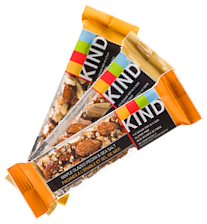
Lunch was Mr. Noodle with chunks of kobasa and more cucumber slices. We finished it off with tasty nut bars for extra energy before the trek. It was the shorter portage first, just 410m to Ironwood Lake, mostly uphill but not as steep as that first 30m.
After our experience on the Big Portage, I decided that the canoe is best on the second trip. Leaving it for last was a bad idea — it isn't heavier than other things, but I found it awkward and life is better when I avoid manipulating it while tired out. I don't like to take it on the first load because that "big hat" makes it difficult to see what the trail is like.
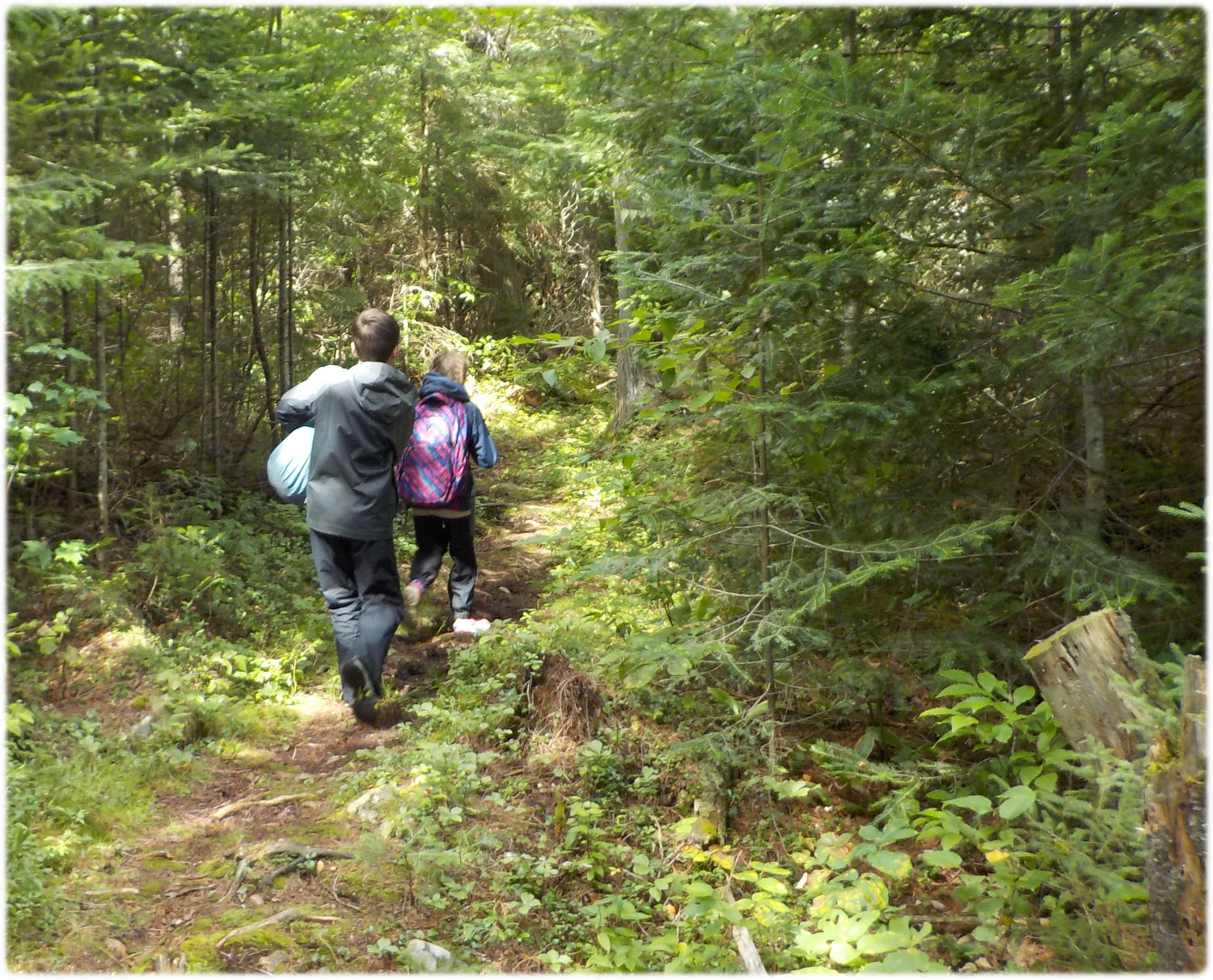
The food barrel (which also now contained various other things) was heaviest, so I took it on my first trip. Then the canoe on the second and utility bag on the third trip. The rejiggered packs meant that the kids had to do only two trips this time, which worked out well. We did this one straight through, which seems like the best way for anything under 500m.
You Can't Fire Me!
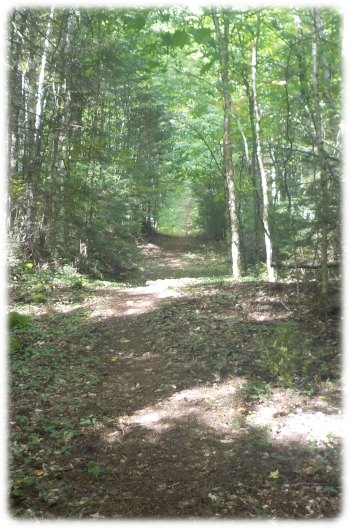
One reason that we took three trips for each portage was because we packed in bags that we found around the house. For example, the kids' old school backpacks, which don't hold very much. I might look into larger bags for future outings. On the other hand, we are also limited in how much weight the kids can carry, so small bags and many trips might be our best option for now.
Other than school backpacks we also had an old, green and gold gym bag which we used for utility gear; duct tape, ropes, tarp, saw, etc. We've had this bag since I went tripping as a teenager more than thirty years ago. Probably bought from Bargain Harolds in Bracebridge, but I barely remember. It is a simple gym bag, no padding on the shoulder strap, and not possible to use the hand holds as an impromptu backpack (I tried many times). It has done the job for many years though, great value.
I was carrying this bag on the third load, and reflecting on how many trips it has been on — especially on how awkward it is to carry. My next thought might have been to replace it before the next trip. I say "might have been" because that is how my thoughts were going, however before I could even get there, I was interrupted by the bag dropping to the ground with a torn shoulder strap! After 30+ years the bag broke just before I thought about replacing it. Obviously, this was the bag's way of saying, "You can't fire me, I quit!"
I was able to use the handholds as short tump lines to complete the portage with the bag hanging on the back of my head. I used that method for all of the remaining portages. The bag and I have since come to an understanding and parted ways.
Lost in a Pond
On the map Ironwood Lake looks like a small lake; one campsite, two portages, not much else. In person it is even smaller, it is clearly a pond and not a lake. The south shore is marshy, we would almost call it a swamp.
Even though it is just a big puddle, we managed to head off in completely the wrong direction. We should have turned left and paddled for about 25m. Instead, we turned right and paddled about 250m — all the way around the so-called "lake".
On the plus side, the extra ten minutes in the canoe gave a bit of a rest on the back-to-back portages.
Another Portage Challenge
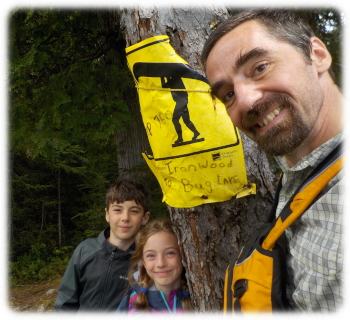
The trail to Bug Lake is 760m and was more challenging than the walk up to Ironwood.
There are long stretches of uphill climbs, including places where water ran right down the trail — we were hiking up a water fall! There was not much water at the time, but we did have slippery, moss covered rocks. A difficult climb, but great fun. It was a nice scene for photos, but unfortunately, they all turned out blurry.
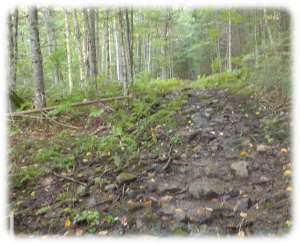
The loads worked out well on the first portage, so we kept the same system. We used the leap frog method this time though, leaving gear about halfway and going back for more. The kids had only two loads, but decided to stretch it to three trips anyhow, doing one load with their nearly empty packs. They didn't seem troubled by the extra walk; just a nice walk in the woods.
At the end of the trail the kids had their parts of the Oreo bar (surprise, surprise, they loved it) while I headed back for my last half trip. Then I got to have my part of the Oreo bar too and agreed with their review. We need to remember to plan treats for the next trip and to have them ready for the trail.
